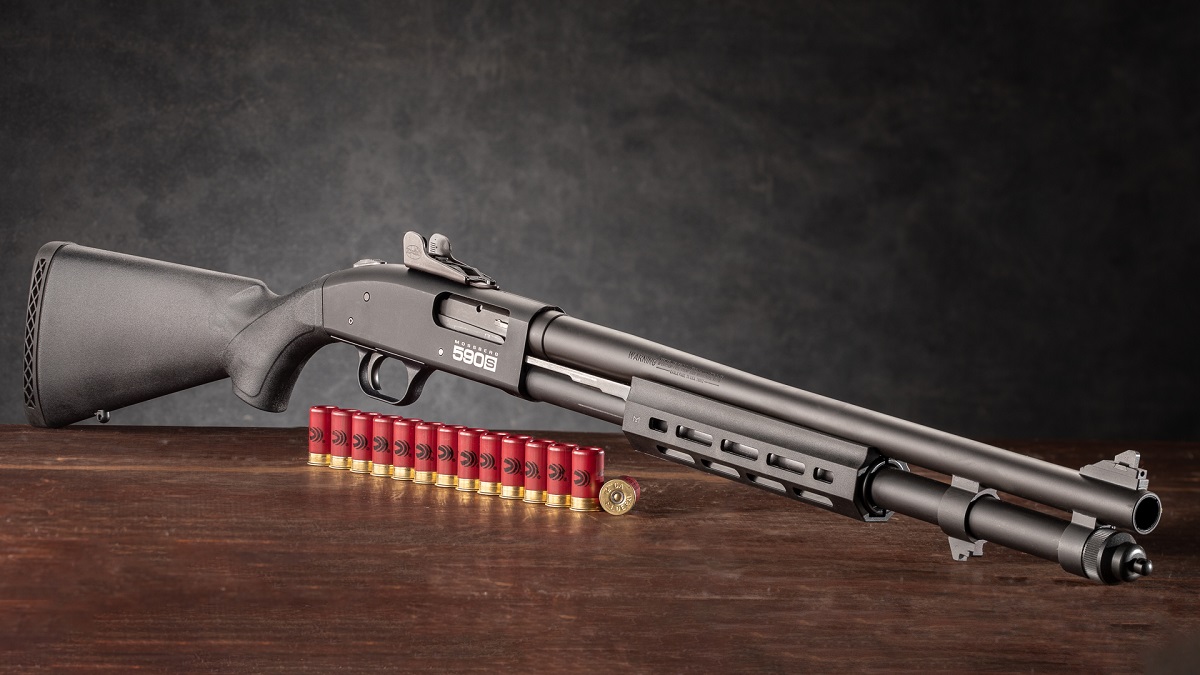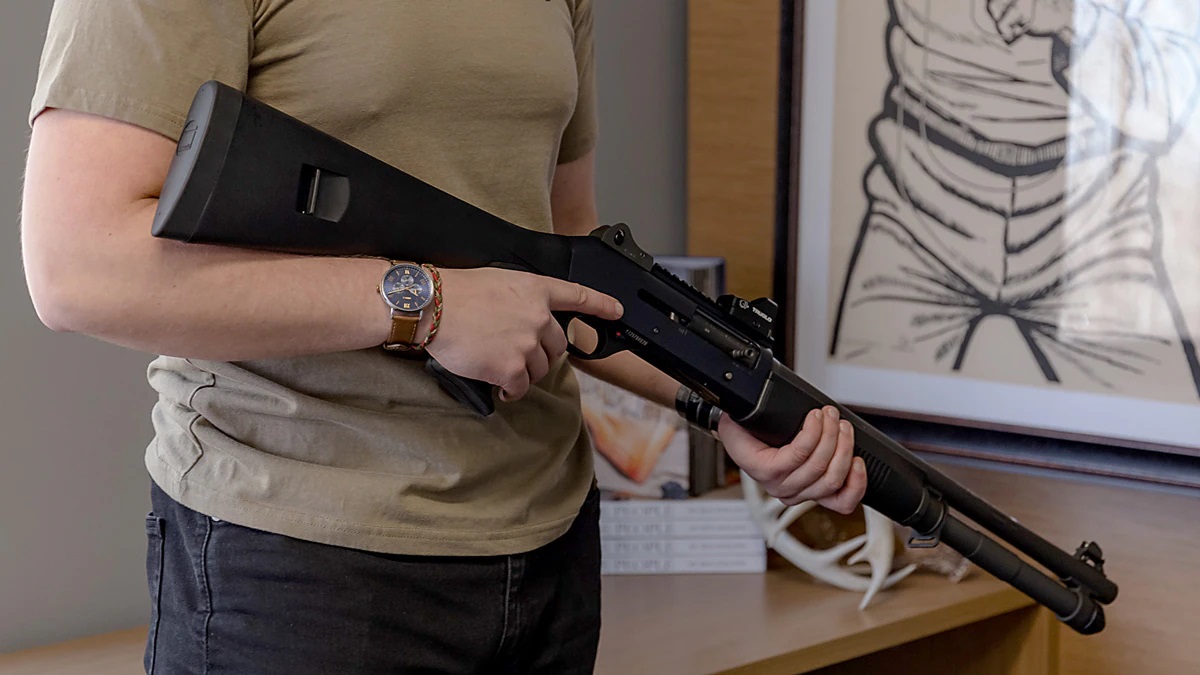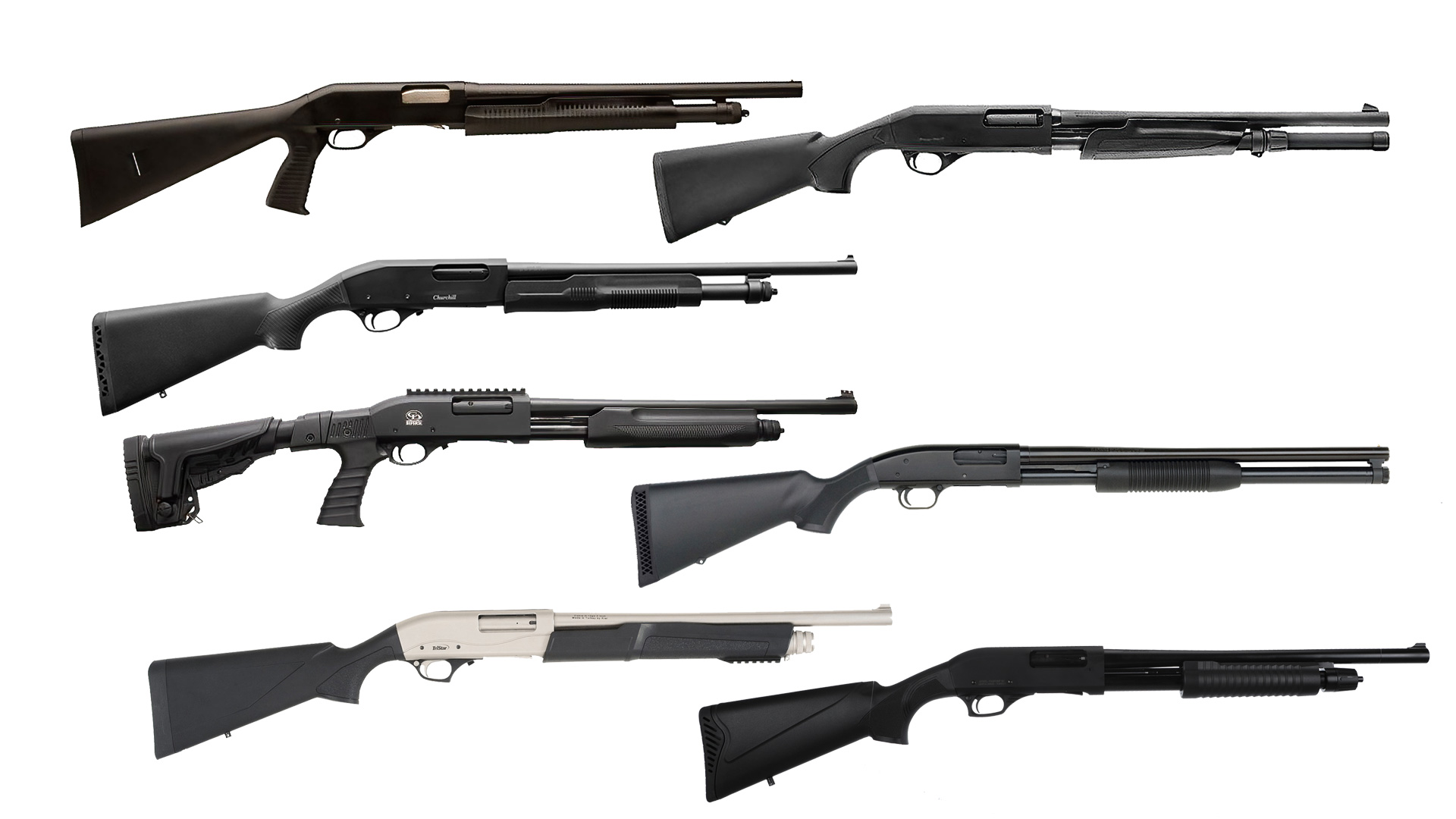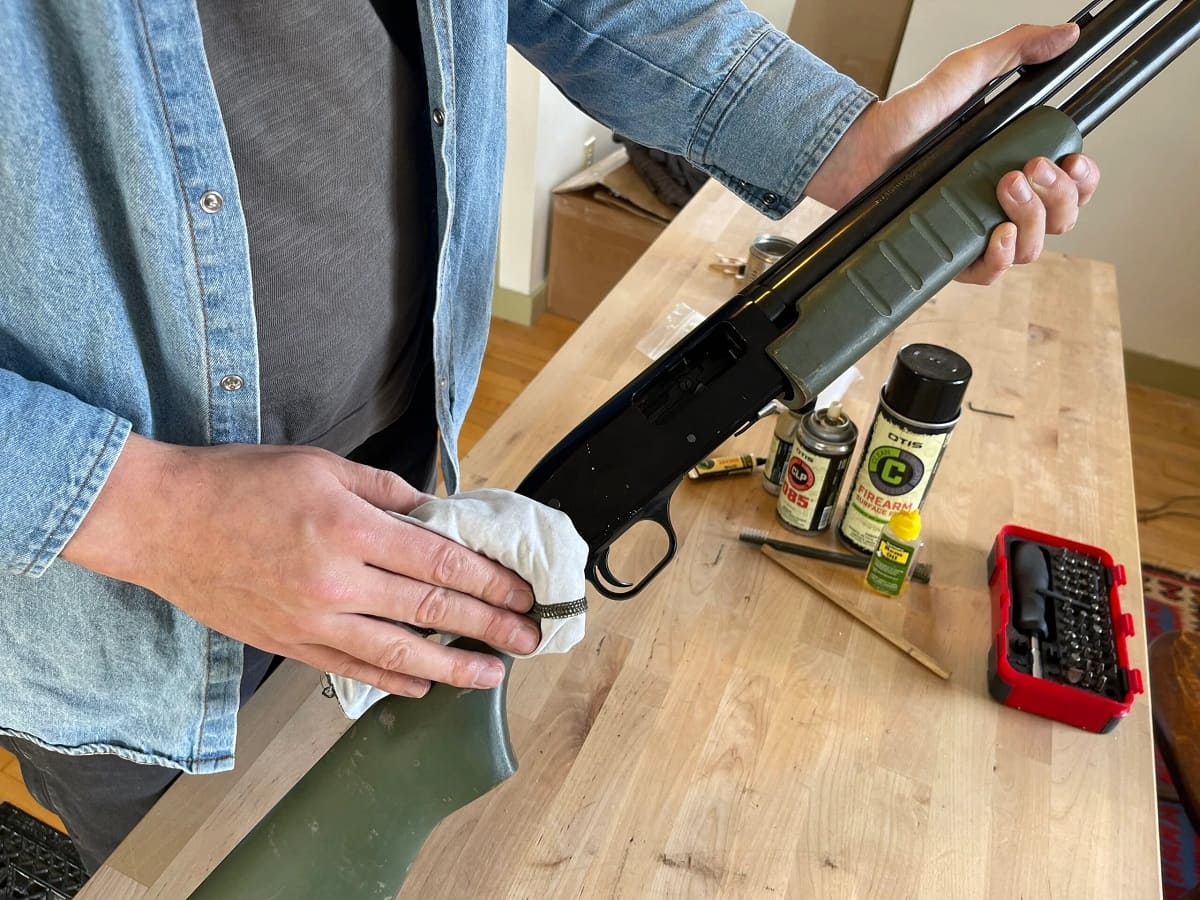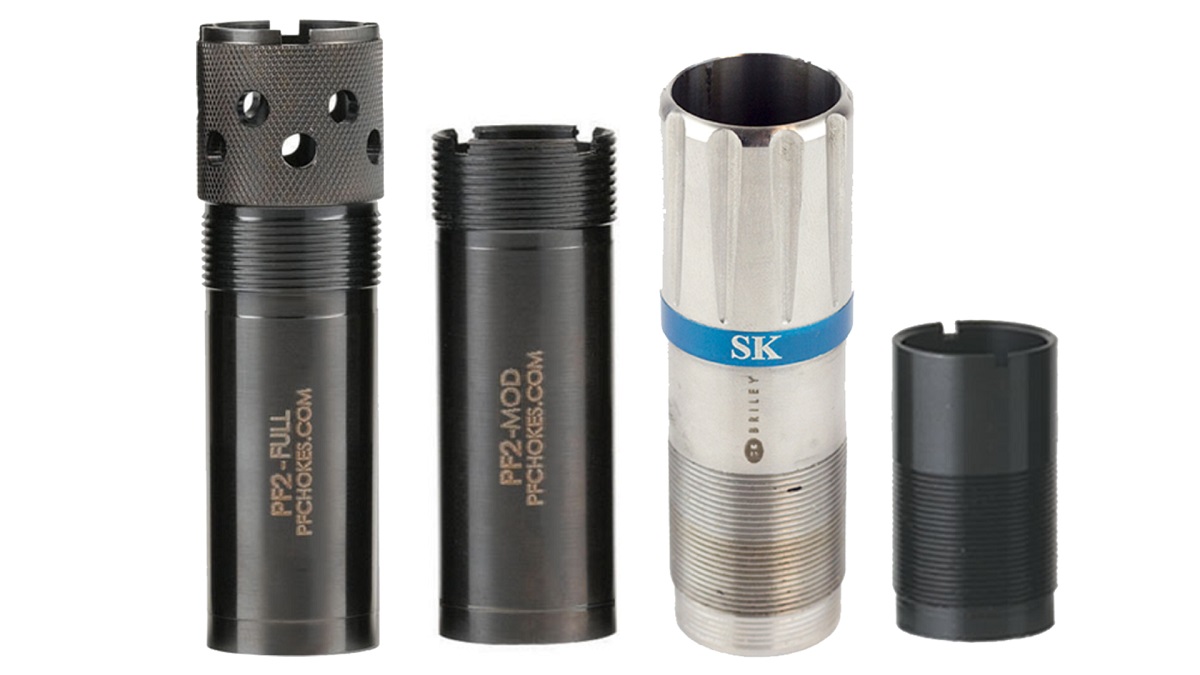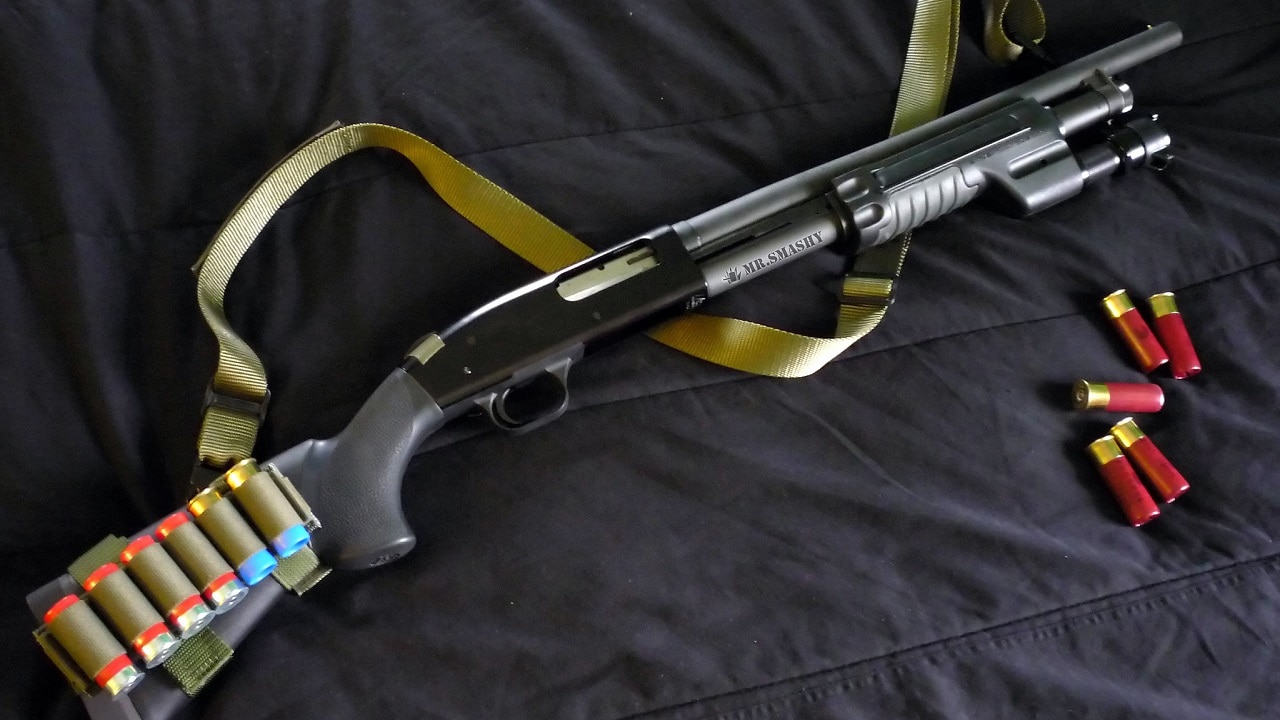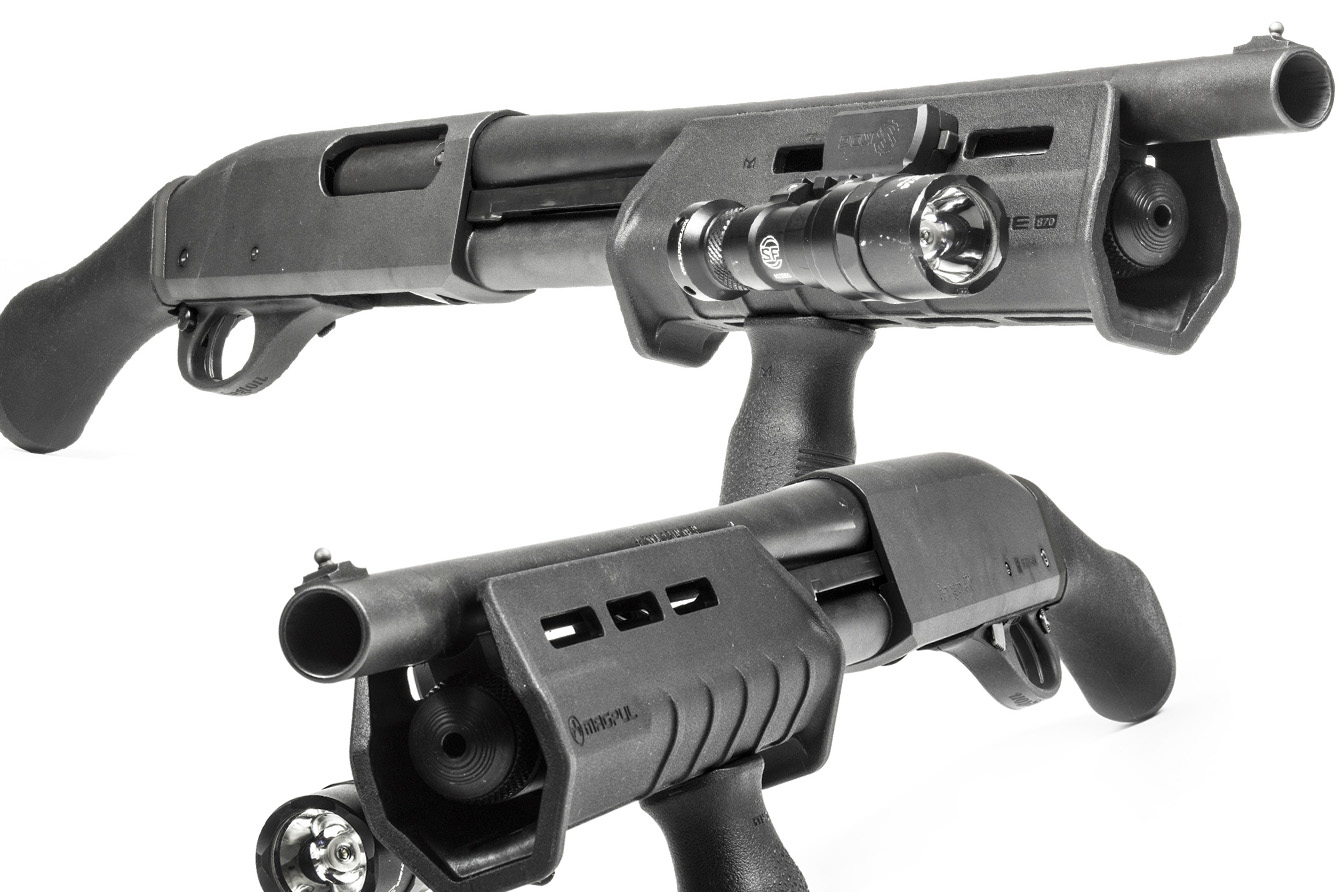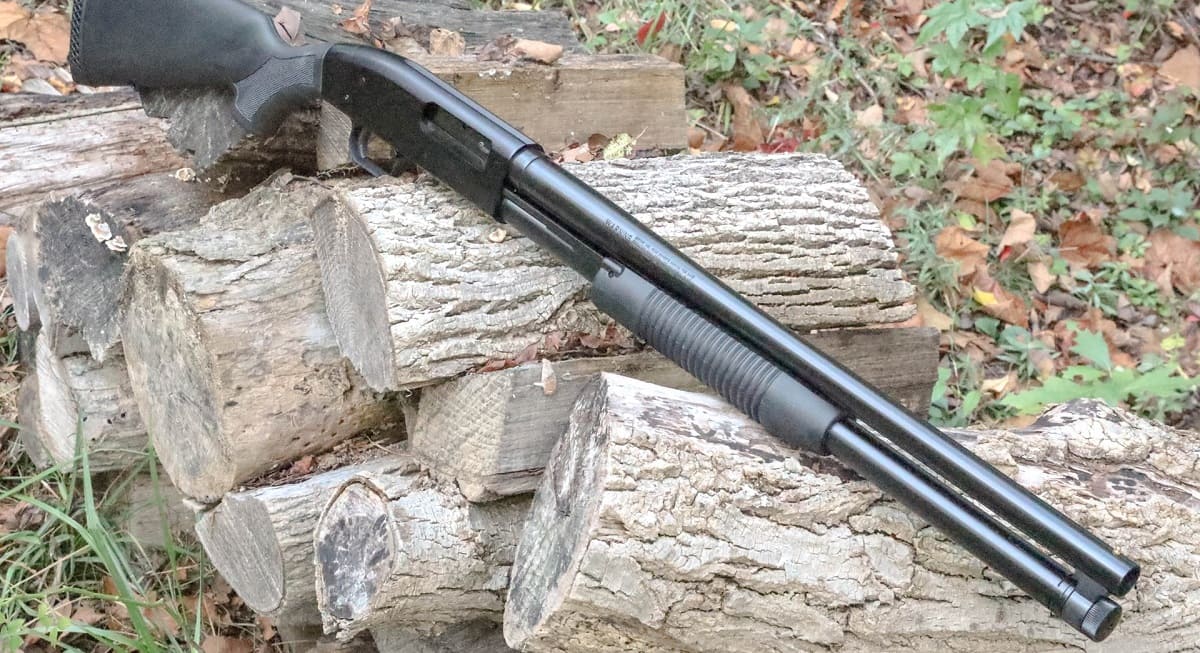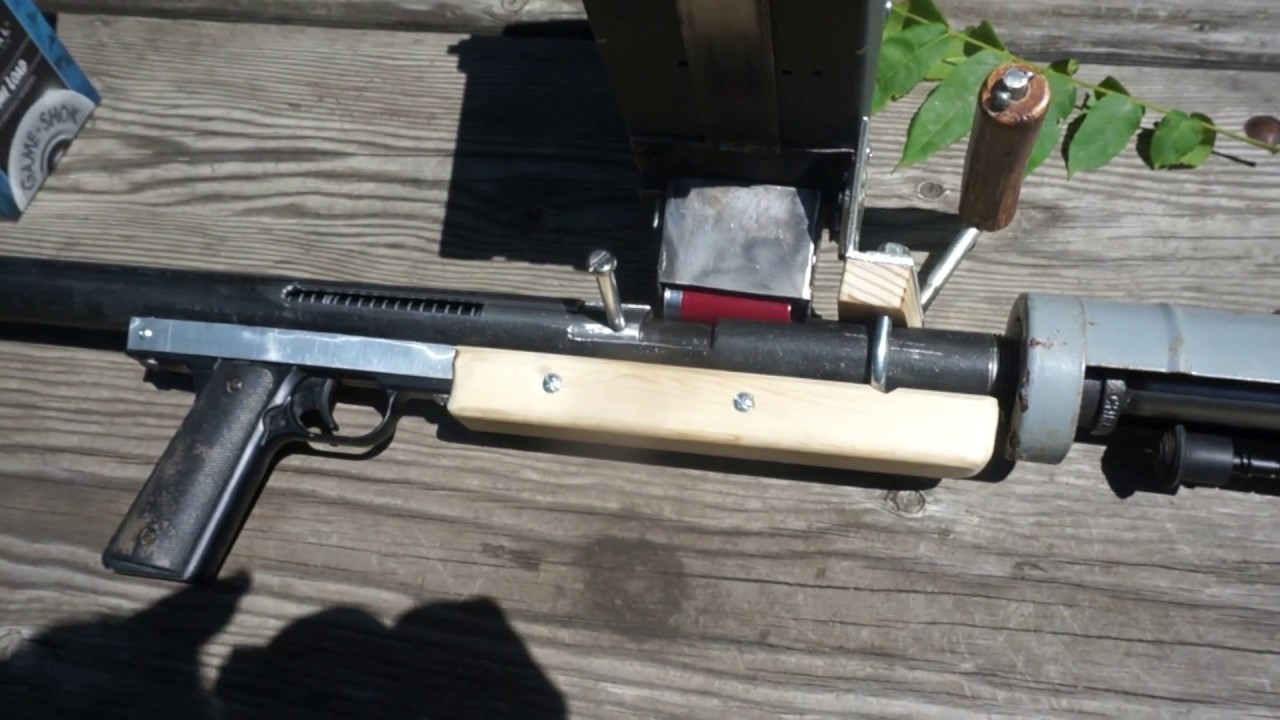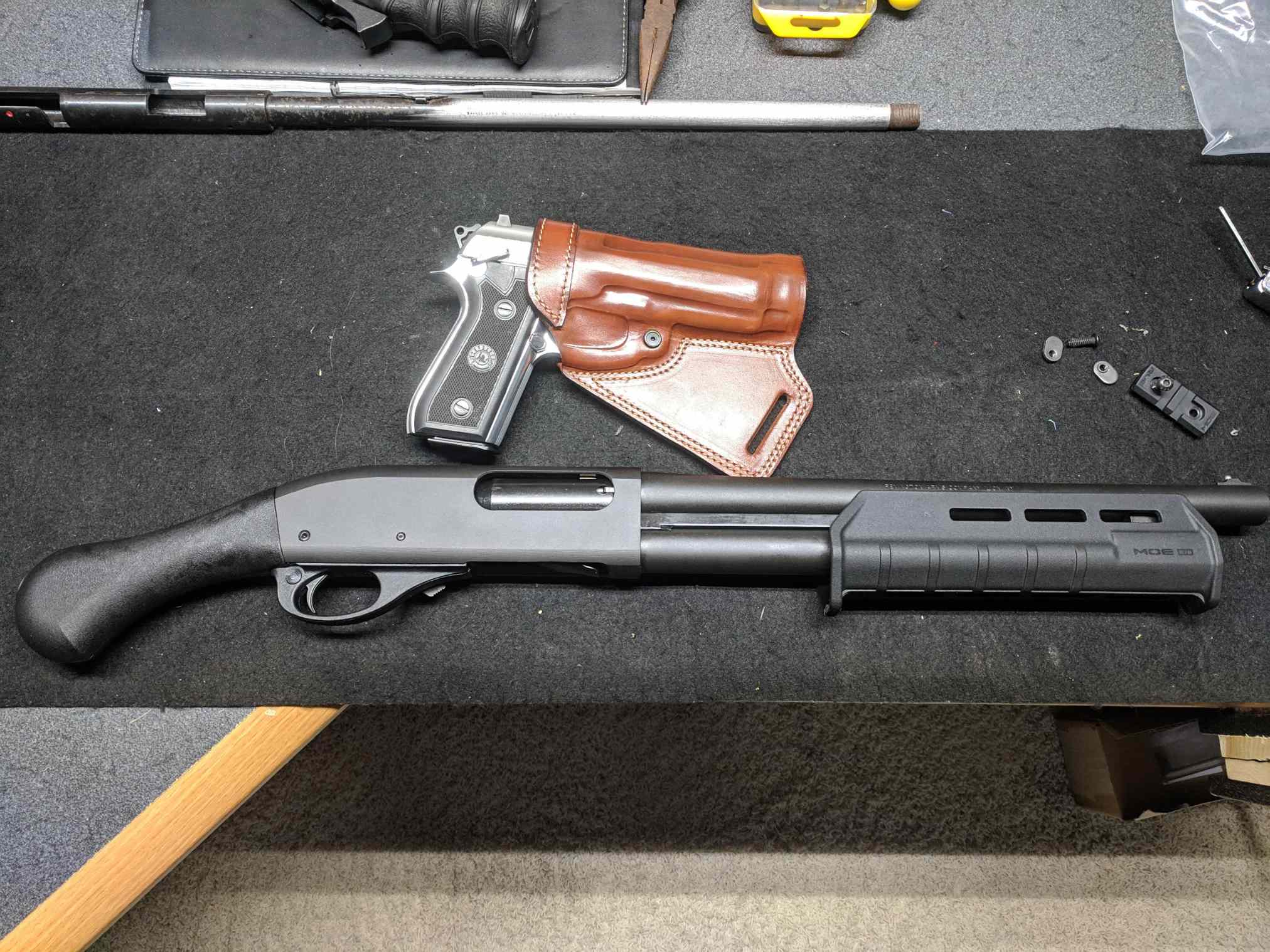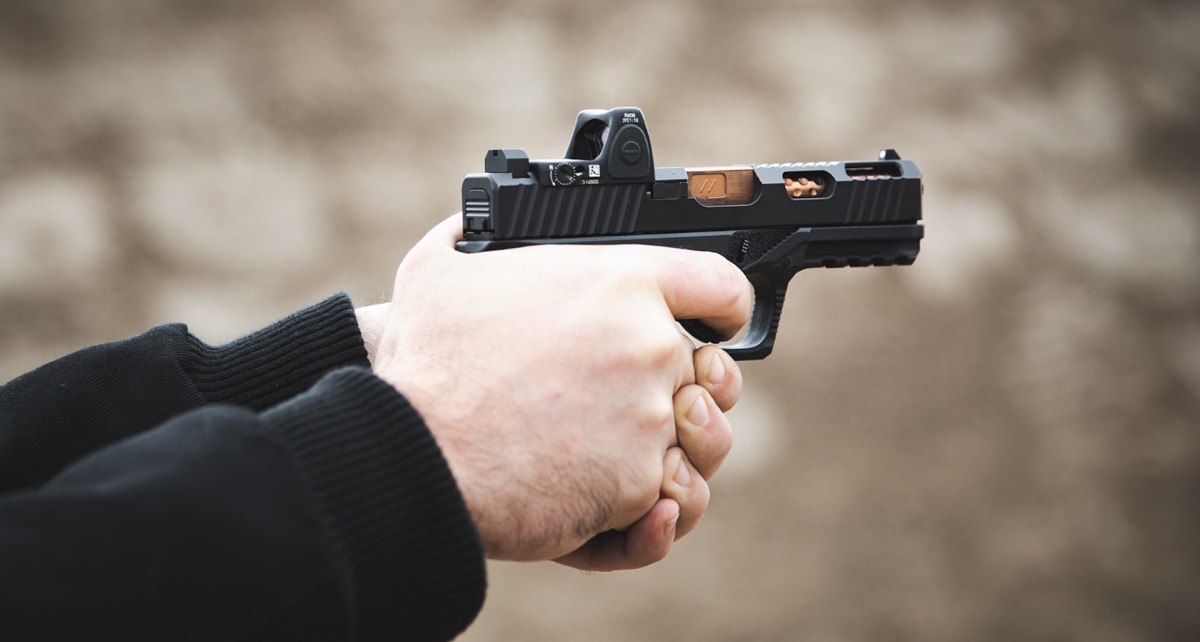Home>Home Security and Surveillance>How To Load A Shotgun For Home Defense


Home Security and Surveillance
How To Load A Shotgun For Home Defense
Modified: March 6, 2024
Learn how to properly load a shotgun for home defense with our comprehensive guide. Enhance your home security and surveillance with this essential skill.
(Many of the links in this article redirect to a specific reviewed product. Your purchase of these products through affiliate links helps to generate commission for Storables.com, at no extra cost. Learn more)
Introduction
When it comes to ensuring the safety and security of your home and loved ones, having a reliable home security and surveillance system is of utmost importance. One of the most effective tools for home defense is a shotgun. With its versatility and stopping power, a shotgun can provide you with the peace of mind knowing that you have a formidable weapon at your disposal to protect your home.
In this article, we will explore how to properly load a shotgun for home defense. We will discuss the different types of shotguns available, the importance of choosing the right shotgun for home defense, and understanding the ammunition for optimal performance. We will also cover the necessary safety precautions before loading a shotgun and provide a step-by-step guide to loading a shotgun effectively. Lastly, we will share some valuable tips to ensure you are prepared and confident in your home defense strategy.
So, whether you are a first-time firearm owner or looking to enhance your knowledge in home security and surveillance, this article aims to provide you with the essential information you need to effectively load a shotgun for home defense.
Key Takeaways:
- Choosing the Right Shotgun
When selecting a shotgun for home defense, consider factors like gauge, barrel length, and accessories. Prioritize comfort, reliability, and legal requirements to make an informed decision. - Safety First When Loading
Before loading a shotgun, prioritize safety by familiarizing yourself with firearm safety rules, clearing the firearm, and wearing protective gear. Always handle the shotgun with care and follow manufacturer’s instructions.
Understanding the Different Types of Shotguns
Shotguns are available in various types, each designed for specific purposes and preferences. Understanding the different types will help you make an informed decision when choosing a shotgun for home defense.
1. Pump-Action Shotguns: One of the most popular and widely used shotguns, the pump-action shotgun is known for its reliability and simplicity. These shotguns require the user to manually pump the fore-end to eject the spent shell and load a new one. The pump-action design provides excellent reliability and makes it easy to cycle various types of ammunition.
2. Semi-Automatic Shotguns: Semi-automatic shotguns use the energy from the fired shell to automatically cycle the action and load a new shell. These shotguns offer faster follow-up shots and reduced recoil compared to pump-action shotguns. They are a great choice for those who prefer a quicker shooting experience.
3. Break-Action Shotguns: Break-action shotguns feature a hinge mechanism that allows the barrel(s) to pivot down and expose the chamber(s) for loading and unloading. They can be either single-shot or double-barreled shotguns. Break-action shotguns are easy to maintain and offer a simple and reliable design.
4. Bolt-Action Shotguns: Bolt-action shotguns require the user to manually operate a bolt handle to chamber a new round. While they may not be as popular for home defense as other types, they are known for their accuracy and can be a good option for those who prioritize precision.
5. Lever-Action Shotguns: Lever-action shotguns feature a lever near the trigger guard that the shooter operates to cycle the action. While not as commonly used for home defense, lever-action shotguns offer a classic and nostalgic feel, reminiscent of the Old West.
Each type of shotgun has its advantages and considerations. When selecting a shotgun for home defense, it is essential to consider factors such as reliability, ease of use, and personal preferences. Ultimately, choose a shotgun that you feel comfortable with and confident in handling.
Choosing the Right Shotgun for Home Defense
Choosing the right shotgun for home defense is a crucial decision. It is essential to select a firearm that suits your needs, preferences, and provides the best protection for your home and loved ones. Here are some factors to consider when choosing a shotgun for home defense:
1. Gauge: Shotguns come in different gauges, with the most common being 12 gauge and 20 gauge. The gauge refers to the diameter of the shotgun barrel. For home defense purposes, 12 gauge shotguns are generally recommended due to their wider range of ammunition options and stopping power. However, 20 gauge shotguns can also be effective and offer reduced recoil.
2. Barrel Length: The length of the shotgun barrel determines its overall maneuverability. For home defense, a shorter barrel length, typically between 18 to 20 inches, is ideal as it allows for easier handling and may be more effective in close quarters.
3. Capacity: Consider the capacity of the shotgun, which refers to the number of rounds it can hold. Shotguns typically come in either pump-action or semi-automatic variants with varying magazine capacities. Choose a shotgun with a sufficient capacity for your specific needs.
4. Accessories and Modifications: Look for shotguns that allow for easy attachment of accessories such as tactical lights, laser sights, or red-dot optics. These additions can enhance accuracy and target acquisition in low-light situations, making your shotgun even more effective for home defense.
5. Fit and Comfort: Ensure that the shotgun feels comfortable and well-balanced in your hands. The stock length and design should be suitable for your body type, providing stability and control. Remember, a shotgun that fits you well will help you handle and operate the firearm more effectively.
6. Reliability and Quality: Select a shotgun from a reputable manufacturer known for producing reliable firearms. Research reviews and seek recommendations from experienced shooters to ensure you choose a high-quality shotgun that will function flawlessly when you need it most.
7. Legal Considerations: Familiarize yourself with the local laws and regulations regarding shotgun ownership and use for home defense. Ensure that the shotgun you choose meets all legal requirements and that you adhere to the necessary licensing and registration procedures.
Ultimately, finding the right shotgun for home defense is a personal choice. Visit a local firearms store, handle different models, and seek expert advice to make an informed decision. Remember to prioritize your safety, comfort, and the overall effectiveness of the shotgun for home defense purposes.
Understanding Ammunition for Home Defense
When it comes to home defense, selecting the right ammunition for your shotgun is vital. The ammunition you choose can significantly impact the effectiveness and safety of your home defense strategy. Here are some important factors to consider when it comes to ammunition:
1. Shotshell Types: Shotshells designed for home defense typically fall into two categories: buckshot and birdshot. Buckshot shells contain multiple large pellets, while birdshot shells contain numerous smaller pellets. For home defense, it is generally recommended to use buckshot as it provides better stopping power and penetration against potential threats.
2. Shotshell Size: Shotshells are available in different sizes, typically indicated by a number. The smaller the number, the larger the pellets. For home defense, common shotshell sizes range from #00 (double-aught) to #4. #00 buckshot is popular for its effectiveness in close-quarters situations. However, consider your specific circumstances and seek advice from local law enforcement or self-defense professionals to determine the appropriate shotshell size for your home defense needs.
3. Shell Length: Shotshell lengths usually range from 2¾ inches to 3½ inches. For home defense, 2¾ inch shotshells are typically sufficient. These shorter shells offer reliable performance and are readily available.
4. Velocity and Recoil: Pay attention to the velocity of the ammunition you choose. Higher velocities often result in greater terminal performance. However, it’s important to consider the recoil produced by higher-powered ammunition. Excessive recoil can affect accuracy and hinder follow-up shots. Strike a balance between velocity and controllability to ensure effective shot placement and quick recovery between shots.
5. Overpenetration: Consider the potential for overpenetration when selecting home defense ammunition. Overpenetration occurs when a projectile passes through its intended target and continues traveling, potentially posing a risk to bystanders or property. Buckshot has a higher likelihood of overpenetration compared to birdshot or other specialty rounds. Evaluate your home’s layout and construction to determine the best balance between stopping power and mitigating the risk of overpenetration.
6. Test and Evaluate: It is essential to test various brands and loads of ammunition to ensure reliable functioning and accuracy in your specific shotgun. Consider going to a shooting range and testing different types of ammunition to determine which one performs best with your shotgun.
Always follow the manufacturer’s recommendations regarding ammunition compatibility with your specific shotgun model. Additionally, consult local laws and regulations to ensure you adhere to any specific restrictions or requirements regarding ammunition for home defense purposes.
By understanding the different types of shotshell ammunition available and considering factors such as shotshell type, size, velocity, and overpenetration, you can make an informed decision when selecting ammunition for your home defense shotgun.
When loading a shotgun for home defense, always ensure that the safety is engaged before loading the ammunition. This will prevent any accidental discharge while loading the firearm.
Safety Precautions Before Loading a Shotgun
Prior to loading your shotgun for home defense, it is crucial to prioritize safety. By following these safety precautions, you can minimize the risk of accidents and ensure a secure environment for both yourself and others:
1. Familiarize Yourself with Firearm Safety: If you are new to firearms or shotguns, take the time to educate yourself on firearm safety rules. Understand the four fundamental rules: treat every firearm as if it is loaded, never point the muzzle at anything you are not willing to destroy, keep your finger off the trigger until you are ready to shoot, and be aware of your target and what’s beyond it.
2. Clear and Secure the Firearm: Before loading your shotgun, ensure that it is clear of ammunition and any obstructions. Visually and physically inspect the chamber, magazine, and action to confirm that no ammunition is present. Place the shotgun in a secure location, away from unauthorized access.
3. Maintain Proper Barrel Control: Always handle the shotgun with the muzzle pointed in a safe direction. Be aware of what is in front of and behind your intended target. Avoid pointing the shotgun at anything you do not want to shoot, including yourself or others.
4. Use the Correct Ammunition: Ensure that you are using the correct ammunition for your specific shotgun. Different shotguns may have specific ammunition requirements, such as gauge and shell length. Using the wrong ammunition can lead to malfunctions and potential hazards.
5. Keep Finger off the Trigger: Until you are ready to shoot, keep your finger off the trigger and outside the trigger guard. This helps prevent unintentional discharges while handling the shotgun.
6. Wear Hearing and Eye Protection: When handling firearms, including shotguns, always wear appropriate hearing and eye protection. This helps protect against potential loud noise exposure and any debris that may be discharged from the firearm.
7. Follow Manufacturer’s Instructions: Read and familiarize yourself with the manufacturer’s instructions, safety warnings, and recommended handling procedures specific to your shotgun model. This will provide you with valuable information on the proper operation and maintenance of your firearm.
8. Store Ammunition Separately: Keep your shotgun ammunition stored separately from the firearm in a secure and locked location. This further ensures that unauthorized individuals cannot access the ammunition and helps prevent accidental loading or discharge of the shotgun.
By adhering to these safety precautions, you can significantly minimize the risk of accidents or mishaps while handling and loading your shotgun for home defense. Remember that safety should always be the top priority when it comes to firearms.
Read more: How To Pick A Shotgun For Home Defense
Step-by-Step Guide to Loading a Shotgun for Home Defense
Knowing how to properly load your shotgun for home defense is essential to ensure its effective use when it matters most. Follow these step-by-step instructions to safely and efficiently load your shotgun:
- Ensure the shotgun is pointed in a safe direction, with the muzzle away from yourself and others. Treat the firearm as if it is loaded at all times.
- Visually and physically inspect the chamber, magazine, and action to confirm that they are empty and free from any obstructions.
- If using a pump-action or semi-automatic shotgun, grasp the fore-end firmly and pull it fully to the rear to open the action.
- Insert the desired shotshell into the chamber, ensuring it is fully seated.
- For pump-action shotguns, push the fore-end forward to close the action and chamber the shell. Ensure it is securely locked in place.
- If using a break-action shotgun, open the action by pivoting the barrel(s) down, exposing the chamber(s) for loading.
- Insert the shell into the open chamber, making sure it is fully seated.
- Close the action by pivoting the barrel(s) up until they are fully locked in place.
- For shotguns with removable magazines, insert the desired number of shells into the magazine until it is fully loaded. Ensure the magazine is securely attached to the shotgun.
- Perform a final visual inspection to verify that the chamber and magazine are loaded with the correct ammunition.
Remember, always keep your finger off the trigger until you are ready to shoot, and keep the muzzle pointed in a safe direction at all times. Practice this loading procedure regularly to become familiar with the process and build muscle memory.
In the event that you need to unload the shotgun, always follow the reverse steps in a safe and controlled manner. Keep in mind that unloading a shotgun should only be done when necessary and in a safe environment.
By following this step-by-step guide, you can confidently load your shotgun for home defense, ensuring that it is ready for immediate use whenever the need arises.
Tips for Effective Shotgun Loading
Proper shotgun loading is a critical skill that can enhance your readiness and effectiveness in a home defense situation. Consider these tips to improve your shotgun loading technique:
- Practice Makes Perfect: Regularly practice loading and unloading your shotgun. The more familiar you become with the process, the more confident and efficient you will be when it counts.
- Train in Different Lighting Conditions: Practice loading your shotgun in various lighting conditions, including low-light situations. This will help you become comfortable with loading under different circumstances.
- Use a Side Saddle or Shell Carrier: Consider adding a side saddle or shell carrier to your shotgun’s stock or receiver. These accessories provide quick and easy access to additional rounds, allowing for faster reloading when needed.
- Consider Speed Reload Techniques: Explore speed reload techniques such as the “tactical” or “load two” method. These techniques involve loading two shotgun shells at once to expedite the reloading process.
- Implement a Routine: Develop a consistent routine for loading your shotgun. This can help streamline the process and ensure you don’t miss any steps, especially in high-stress situations.
- Practice with Various Ammunition: Test different types of shotgun ammunition to familiarize yourself with their specific characteristics and performance. This will help you select the most suitable ammunition for your home defense needs and adjust your technique accordingly.
- Stay Calm and Focus: During a high-stress situation, it is crucial to remain calm and focused. Take a deep breath, concentrate on the task at hand, and load your shotgun deliberately and confidently.
- Seek Professional Training: Consider enrolling in a firearms training course that specifically covers shotgun handling and loading techniques. Professional instruction can provide invaluable insights and help you develop proper habits and techniques.
- Maintain Your Shotgun: Regularly clean and maintain your shotgun to ensure reliable operation. A well-maintained shotgun will perform optimally during loading and shooting, enhancing your overall home defense strategy.
- Continuously Assess and Improve: Regularly assess your shotgun loading technique and look for areas of improvement. Seek feedback from experienced shooters or instructors to refine your skills and become more efficient.
Remember, effective shotgun loading comes with practice and repetition. By implementing these tips and dedicating time to honing your skills, you can build confidence in your ability to swiftly and reliably load your shotgun for home defense situations.
Conclusion
Ensuring the safety and security of your home and loved ones is of paramount importance. A shotgun is a versatile and powerful tool for home defense, and knowing how to properly load and handle it is crucial. By understanding the different types of shotguns available and selecting the right one for your needs, familiarizing yourself with ammunition options, and following essential safety precautions, you can effectively prepare your shotgun for home defense.
Remember to prioritize safety at all times. Practice proper firearm handling, keep your finger off the trigger until you are ready to shoot, and always point the shotgun in a safe direction. Regular training and practice in loading and unloading your shotgun will enhance your readiness and proficiency, even in high-stress situations.
Consider the various tips and techniques provided to improve your shotgun loading skills. Implementing a routine, utilizing accessories like side saddles or shell carriers, and seeking professional training can all contribute to your proficiency and confidence in handling your shotgun for home defense.
It is important to stay informed about laws and regulations governing firearm ownership and use in your area. Adhere to these laws and ensure that you are properly licensed and registered as required.
By taking the time to understand the intricacies of loading a shotgun for home defense, practicing regularly, and continuously refining your technique, you can be well-prepared to protect your home and loved ones in the face of potential threats.
Remember, responsible firearm ownership entails not only knowing how to load, handle, and use a shotgun effectively, but also understanding the importance of secure storage, maintaining your firearm, and seeking ongoing education on firearm safety.
Stay vigilant, stay prepared, and prioritize the safety and security of your home and loved ones. Your shotgun can be an invaluable tool in defending what matters most to you.
Frequently Asked Questions about How To Load A Shotgun For Home Defense
Was this page helpful?
At Storables.com, we guarantee accurate and reliable information. Our content, validated by Expert Board Contributors, is crafted following stringent Editorial Policies. We're committed to providing you with well-researched, expert-backed insights for all your informational needs.
